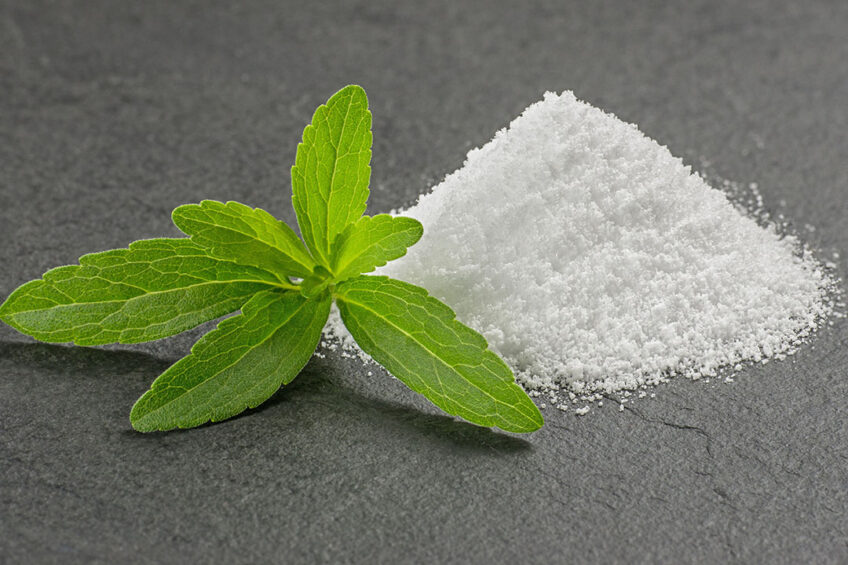Stevia as a feed additive improves productivity and gut health of laying hens

In a new study from China researchers looked at the effect of stevia residue on the performance and gut functions of laying hens.
In the recent study that was published in the Journal of Poultry Science, researchers from China investigated the effects of stevia residue on the production performance, immune response, gut microbiota and gut morphology of laying hens.
Data collection
A total of 270 35-week-old Yukou Jingfen laying hens were used for this trial that lasted 28 days. The birds were randomly divided into 5 groups.
The treatment groups received 2, 4, 6 and 8% dietary stevia residue supplementation, respectively, while the control group received stevia residue-free diets.
Egg production rate, egg weight and broken and shell-less eggs were recorded daily. The average daily feed intake and feed-egg ratio were recorded weekly. Sections of the duodenum, jejunum and ileum were collected for gut morphology analyses. Cecal content was collected for 16S rRNA sequencing to evaluate gut microbiota. Egg quality was measured, including eggshell strength and thickness, albumen height, yolk colour and egg shape index. Amino acid and fatty acid analysis of the egg whites was conducted. Blood samples were collected and immune responses, including the level of interleukin-1β, interleukin-2, interleukin-4 and interleukin-10 in the serum, were analysed. Samples from the liver and oviduct were collected to measure antioxidant capacity, plus oestradiol and cortisol levels.
Impact of stevia residue on egg quality
Dietary supplementation of stevia residue had no impact on eggshell strength and thickness, albumen height and egg shape index. However, the 2, 4, 6 and 8% supplementation of stevia residue decreased the yolk colour.
Impact of stevia residue on production performance
Dietary supplementation of stevia residue had no impact on egg weight, laying rate, feed-egg ratio and average daily feed intake. However, the 2% and 4% supplementation of stevia residue increased egg production rate, suggesting that superfine-ground stevia residue is more readily absorbed by the intestines.
Impact of stevia residue on hormone levels
The 2, 4, 6 and 8% supplementation of stevia residue increased oestradiol level response, possibly due to the rich flavonoid content of stevia residue. Conversely, the 2, 4, 6 and 8% supplementation of stevia residue decreased cortisol levels which is a marker of oxidative stress.
Impact of stevia residue on amino acids in egg white
The 2% supplementation of stevia residue increased levels of beneficial amino acids, including alanine, proline, valine, aspartic acid, methionine and ornithine. The 8% supplementation of stevia residue increased the level of cysteine.
Impact of stevia residue on fatty acid in egg yolk
Fatty acids play a crucial role in providing energy to gut epithelial cells, thus increasing the integrity and immune function of the gut mucosal barrier. The 4, 6 and 8% supplementation of stevia residue increased the acetic acid level. The 8% supplementation of stevia residue enhanced the HOMOγ-linolenic acid and Cis-13,16-docosadienoic acid levels.
Impact of stevia residue on immune responses in serum
The 6% supplementation of stevia residue decreased the pro-inflammatory factor, including IL-1β level. The 4, 6 and 8% supplementation of stevia residue enhanced anti-inflammatory factors, such as IL-2, IL-4, and IL-10 levels. This finding suggests that stevia residue has the potential to alleviate inflammatory symptoms and maintain gut histological structure.
Impact of stevia residue on antioxidant capacity
Dietary supplementation of stevia residue had no impact on total antioxidant activity in the oviduct and serum. However, the 6% supplementation of stevia residue increased total antioxidant activity in the liver due to flavonoids’ antioxidant properties.
Impact of stevia residue on gut morphology
The 6% supplementation of stevia residue increased villus height and the villus to crypt ratio in the jejunum, thus improving overall gut health.
Impact of stevia residue on gut microbiota diversity
The 6% and 8% supplementation of stevia residue decreased the relative abundance of Proteobacteria and Synergistota. The 6% supplementation of stevia residue decreased the relative abundance of Desulfobacteriota. The 8% supplementation of stevia residue increased the relative abundance of Actinobacteria which can positively impact gut health by modulating the immune system and promoting healthy gut-related lymphoid tissue.
Impact of stevia residue on gut microbial species
The 2% supplementation of stevia residue increased the relative abundance of nocardioides, unclassified_oxalobacteraceae and Massilia. By contrast, the 2% supplementation of stevia residue decreased the relative abundance of unclassified_desulfovibrionaceae and UCG_0099. The 6% supplementation of stevia residue increased the relative abundance of Prevotellaceae_UCG_001, Cetobacterium, Firmicutes bacterium ZOR0006 and Gemmobacter. However, the 6% supplementation of stevia residue decreased the relative abundance of Sphingomonas, Massilia and Desulfovibrio.
Impact of stevia residue on metabolic functions of gut microbiota
The 6% supplementation of stevia residue increased the functional genes of translation, the immune system and cancer. Alternatively, the 6% supplementation of stevia residue decreased the functional genes of ageing, neurodegenerative diseases, signal transduction and infectious diseases.
The authors concluded that the 4% and 6% dietary supplementation of stevia residue yielded the most favourable results in terms of enhancing egg production, egg nutritional quality, gut health, immune response, antioxidant capabilities in the liver and oestradiol levels in the oviduct in laying hens.
This article was based on the publication: Improving gut functions and egg nutrition with stevia residue in laying hens, Poultry Science, Volume 103, Issue 2,2024,











